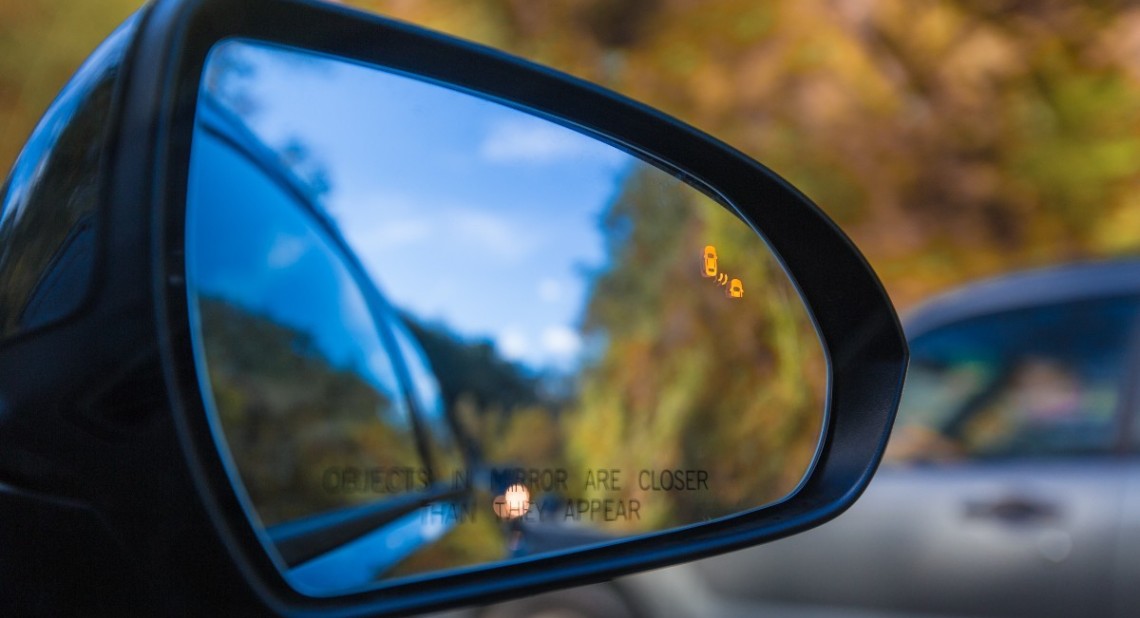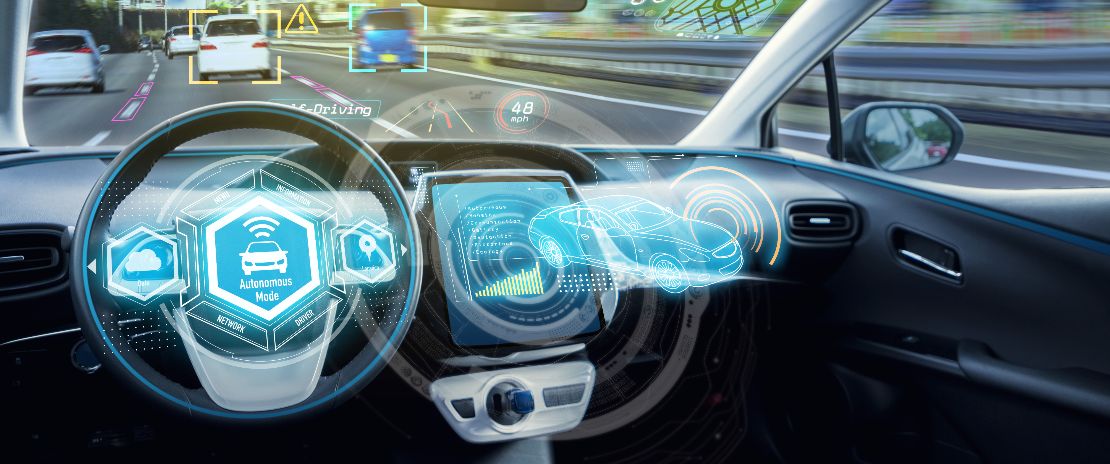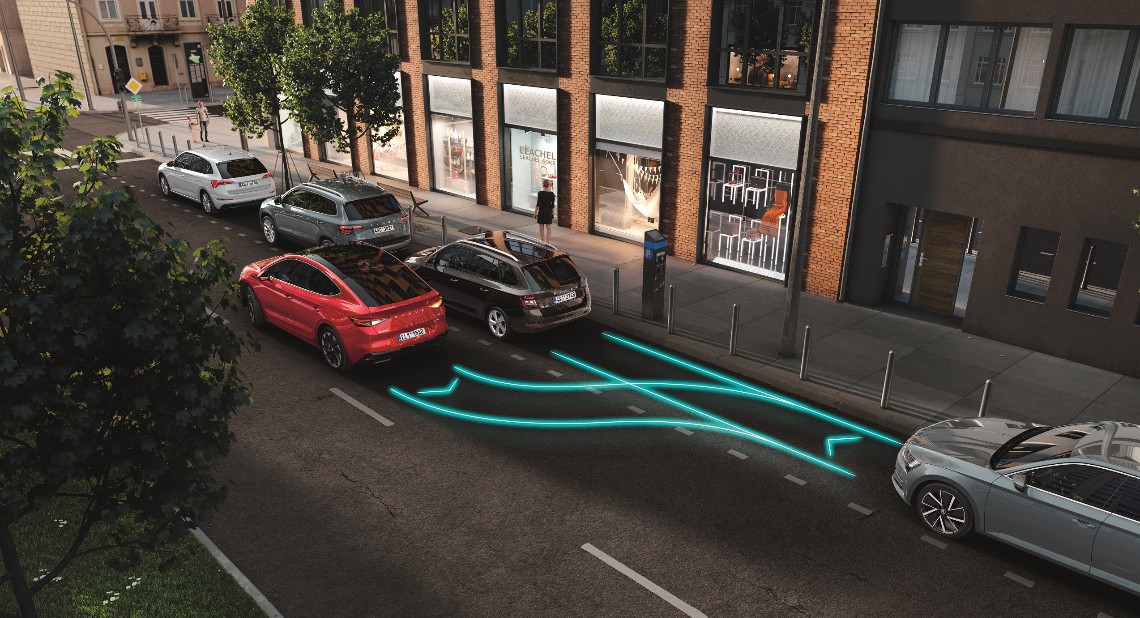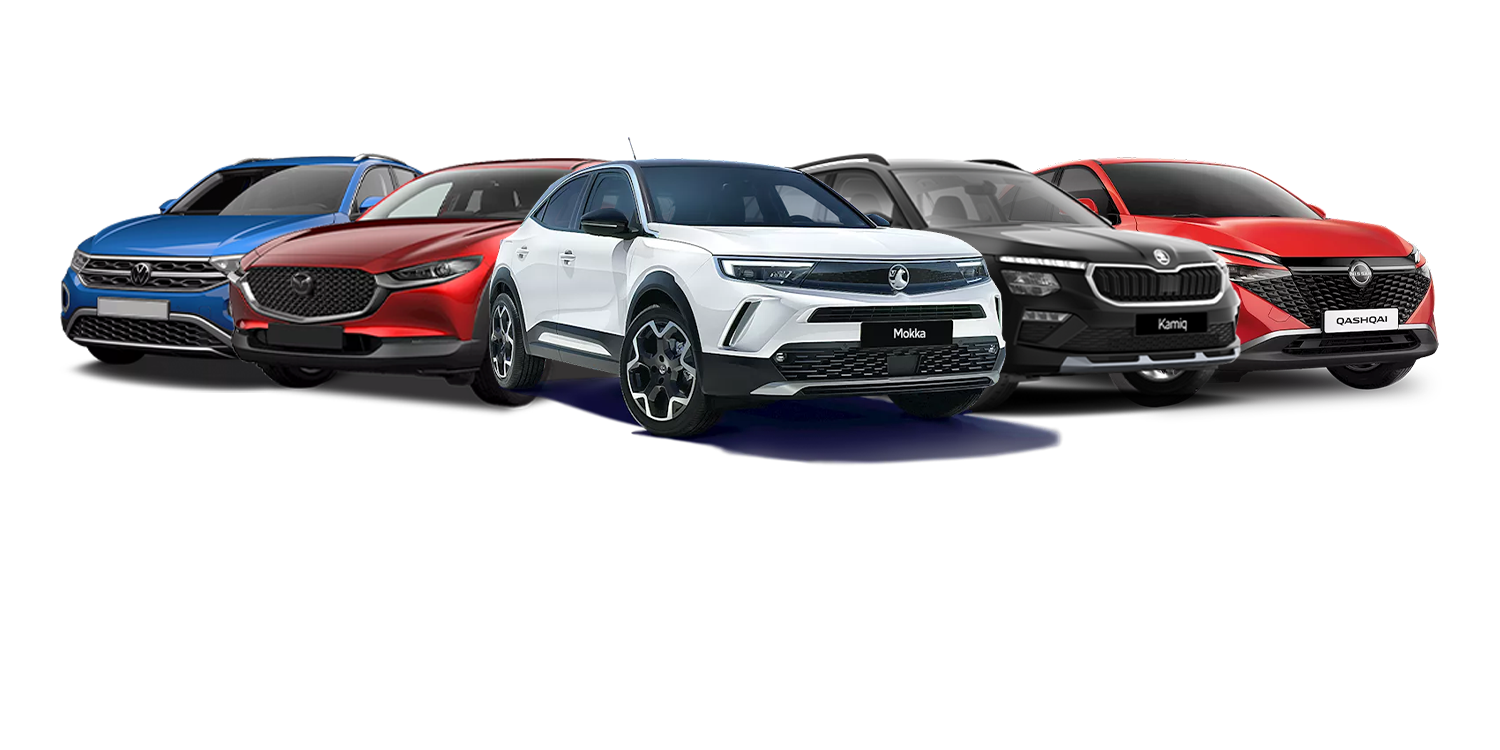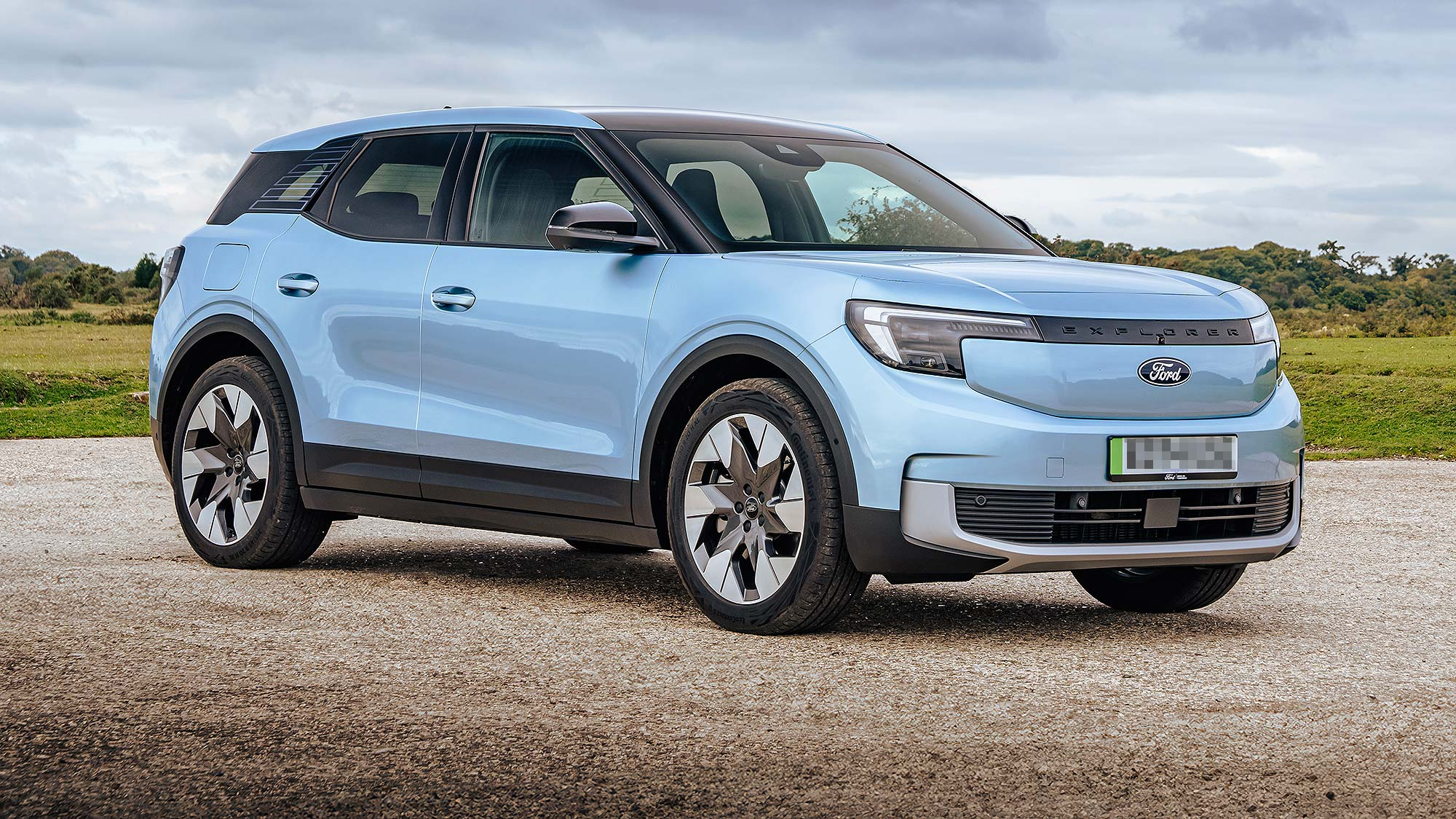Being aware of our blind spots while driving is essential for ensuring safety on the road. It is also vital for keeping passengers, pedestrians, and other road users safe.
Blind spots are areas around the car that are not visible using rearview or side mirrors. To see these spots, we need to take extra measures. This guide will help you identify blind spots and drive more safely on every journey.
Where are the most common blind spots for a driver?
With proper mirror placement, you should have a clear view from the rear window and both sides of your car. The size of the mirrors and windows, plus the height and position of the seat can affect your visibility. For this reason, you should change their positions until you find the best setup for you.
One critical blind spot in almost every car is where pillars obstruct our view. Every car typically has three sets of pillars, four in longer models. The A-pillars are at the front, where the windscreen meets the side windows. The B-pillars are in the middle, on both sides of the car, separating the front and back doors and windows. The C-pillar is at the back of the vehicle, on either side of the rear windscreen. Each pillar can cause a blind spot you must be aware of.
The most common blind spot is over our right shoulder. When we are driving, the moment our seat and the B-pillar combine, it isn’t easy to see clearly. This area can be difficult to see if you have trouble turning your head around 90 degrees while driving. That’s why many cars come installed with technology that can help improve visibility. The area over our left shoulder is slightly less obscured but is still a blind spot you need to be aware of.
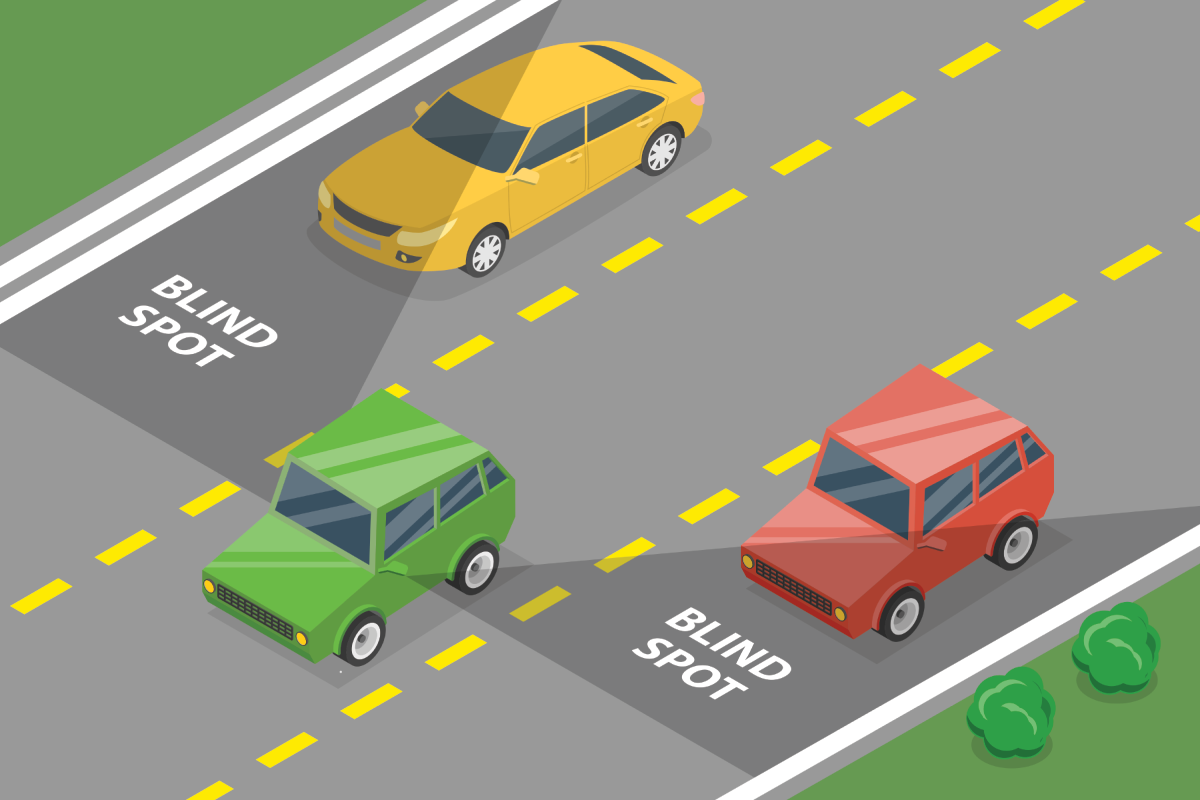 Illustration of a car’s blind spots.
Illustration of a car’s blind spots.
How to check for blind spots while driving?
Make checking your blind spots a routine in every journey. This process follows the ‘mirror-signal-manoeuvre’ rule but with an extra step for checking for any blind spots.
First, check your mirrors for other vehicles or pedestrians. If you are clear, indicate to show your intentions. Now, recheck your mirrors, paying particular attention to your blind spots. Then, and only if it’s safe, make your move.
In which situations do you need to check your blind spots?
Drivers should constantly check their surroundings to scan for other vehicles, road users, and pedestrians. Assess every few seconds, as the environment around you will be constantly changing. However, you will need to pay particular attention to your blind spots at two specific points:
-
Before you move off:
You should check your blind spots before you move the car at any point in your journey. Traffic can come from lots of directions and speeds. You should be careful at junctions and roundabouts. It’s also crucial when parking, especially when you reverse park.
-
When moving onto a motorway:
It’s crucial to check your blind spots when you’re moving with traffic on several sides at different speeds. This is relevant to motorways, dual carriageways, major roads, and any situation with more than one lane. It also applies to changing lanes during your journey.
In both situations, follow ‘mirror-signal-manoeuvre’, paying particular attention to those blind spots.
Why checking your blind spots isn’t always enough
Different-sized vehicles have different views of the road, so we need to be aware of that. For example, a heavy goods lorry has a very different view of the road than a car, motorbike, or bicycle. They may not see you, even if you can see them. Take this into account and drive as cautiously as possible.
How can technology help with blind spots?
Most modern cars come with Advanced Driver Assistance Systems (ADAS). This is an umbrella term for any vehicle technology designed to keep us safe. For example, automatic steering can prevent lane changes and apply brakes if the driver tries to manoeuvre. Many cars have Blind Spot Monitoring (BSM) systems with sensors on wing mirrors and the bumper to detect movement around the vehicle. If motion is detected, a noise or an amber signal will alert you to the danger. The warning may get louder or change from amber to red if the driver keeps moving towards the danger.
Speak to your dealer to learn more about the technology available in Motability Scheme cars. But be aware that while these systems are excellent for keeping us safe, they should be used alongside your own visual checks, not in place of them.
Search the full range
If you’d like to join the 700,000 customers already enjoying the benefits of a worry-free lease package through the Scheme, start exploring the full range of cars available using our Car Search tool to narrow down your options.
Related articles
Car safety technology: 10 top techs for safer driving
Understanding Confusing Car Terms
![]()
